Edge Computing: The Technological Revolution at Your Doorstep 🚀
 Daniel Parente
Daniel ParenteTable of contents
- Article Key Takeaways
- What is Edge Computing, Anyway?
- The 5G Connection: A Match Made in Tech Heaven 🤝
- Cloud Computing: Friend or Foe?
- Quantum Computing: The Wild Card in the Deck
- Blockchain: Securing the Edge?
- Real-World Applications: Edge Computing in Action
- Challenges and Considerations: Navigating the Edge
- The Future of Edge Computing: Peering Over the Horizon
- Further References
- Conclusion: Embracing the Edge of Tomorrow
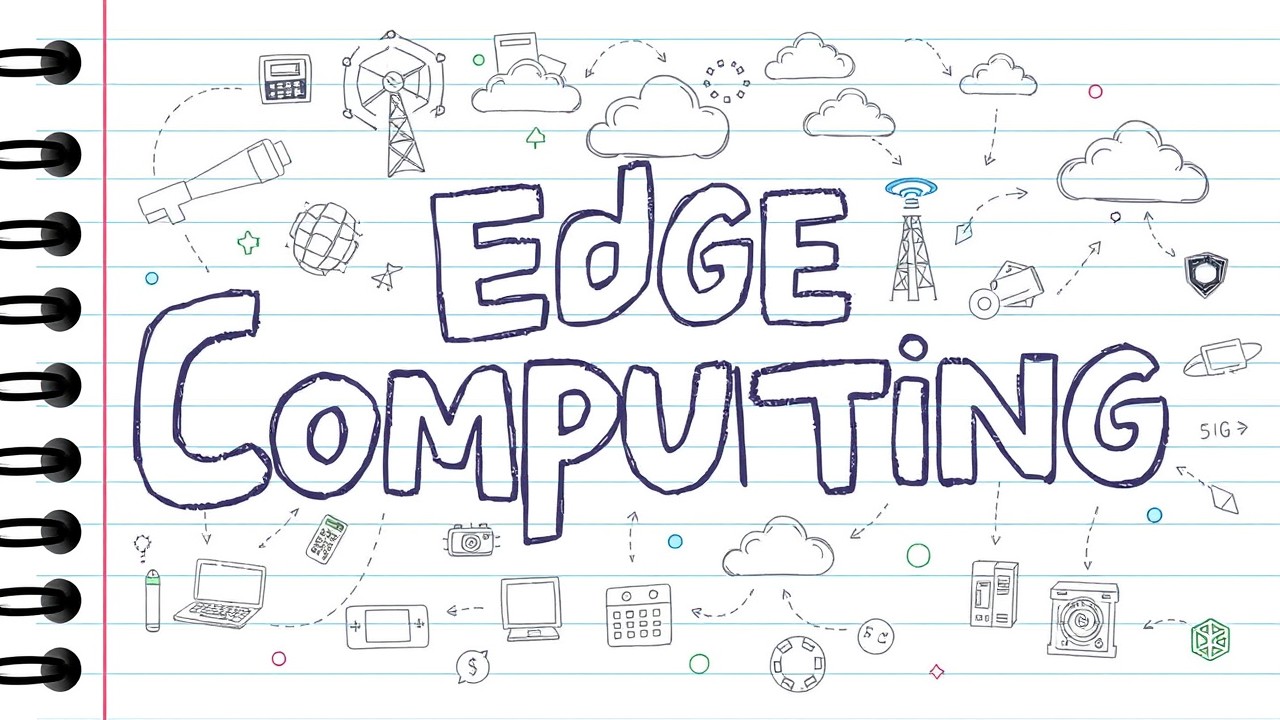
In our increasingly connected world, the way we process and interact with data is undergoing a seismic shift. At the forefront of this transformation is edge computing, a revolutionary approach that’s changing the game for businesses and consumers alike. But what exactly is edge computing, and why should you care? Let’s embark on a journey to uncover the secrets of this groundbreaking technology and its profound impact on our digital future.
Article Key Takeaways
Edge computing brings data processing closer to sources, dramatically reducing latency and enhancing real-time capabilities.
5G networks are the primary catalyst for edge computing’s growth, enabling unprecedented speed and connectivity.
While cloud computing complements edge computing, it faces challenges in latency-sensitive applications.
Emerging technologies like quantum computing and blockchain offer unique benefits but aren’t central to edge computing’s core functions.
Edge computing is transforming industries from healthcare to manufacturing, paving the way for innovative applications and services.

What is Edge Computing, Anyway?
Imagine you’re at a bustling coffee shop, surrounded by the hum of conversation and the aroma of freshly brewed espresso. You pull out your smartphone to check the weather forecast for your upcoming weekend getaway. In the traditional cloud computing model, your request would travel all the way to a distant data center, get processed, and then return to your device with the information you need.
Now, picture a world where that same weather forecast appears on your screen almost instantaneously, as if by magic. That’s the promise of edge computing.
Edge computing is a distributed computing paradigm that brings data processing and storage closer to the sources of data generation. Instead of relying solely on far-off cloud servers, edge computing pushes computational power to the “edge” of the network, near users and devices. This proximity offers several key advantages:
Reduced latency
Improved responsiveness
Enhanced data security
Bandwidth conservation
By processing data locally, edge computing enables a whole new class of applications that require split-second decision-making and real-time analytics.
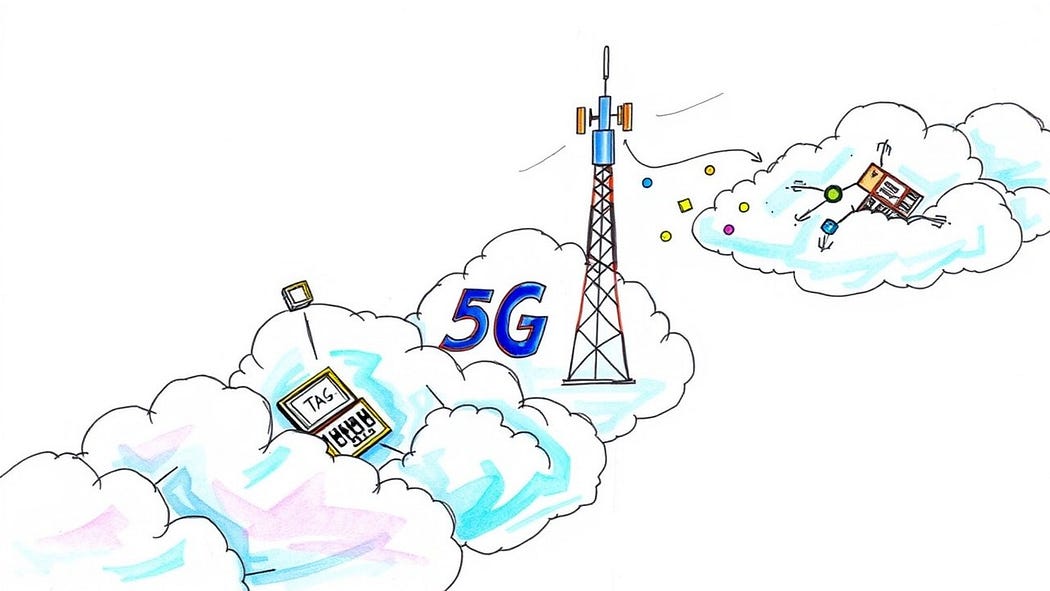
The 5G Connection: A Match Made in Tech Heaven 🤝
When discussing edge computing, it’s impossible to ignore the elephant in the room: 5G technology. The fifth generation of cellular networks has become inextricably linked with edge computing, and for good reason. 5G and edge computing form a symbiotic relationship, each enhancing the capabilities of the other and opening doors to unprecedented applications.
Here’s why 5G and edge computing are a match made in tech heaven:
Lightning-Fast Speeds: 5G networks deliver blazing data transmission rates, enabling edge devices to process and share information at breakneck speeds.
Ultra-Low Latency: With 5G, response times plummet to mere milliseconds, aligning perfectly with edge computing’s goal of minimizing delays.
Massive Device Connectivity: 5G supports a vast number of connected devices, crucial for the proliferation of IoT and edge computing applications.
Network Slicing: This 5G feature allows for dedicated virtual networks optimized for specific edge computing use cases.
Distributed Architecture: Both 5G and edge computing embrace a decentralized approach to data handling, creating a natural synergy.
IBM highlights how this partnership enables transformative applications across industries:
Smart Cities: Real-time traffic management and infrastructure monitoring
Healthcare: Remote surgeries and instant patient data analysis
Manufacturing: Predictive maintenance and adaptive production lines
Retail: Personalized shopping experiences and inventory optimization
The combination of 5G and edge computing is not just an incremental improvement; it’s a paradigm shift that’s reshaping entire industries and creating new possibilities we’ve only begun to imagine.
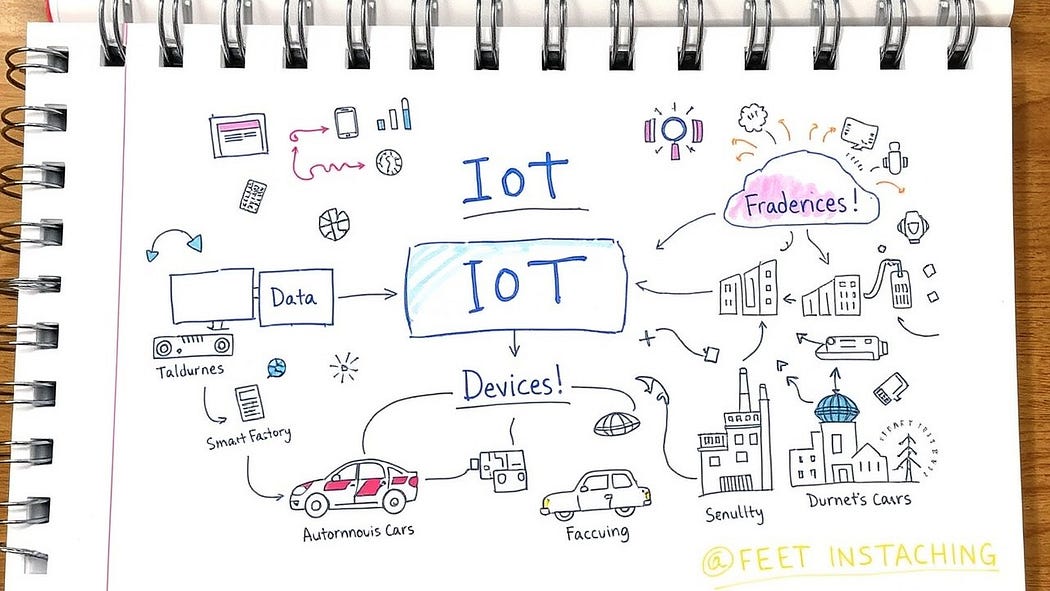
Cloud Computing: Friend or Foe?
As we dive deeper into the world of edge computing, you might be wondering: what about cloud computing? Is it becoming obsolete in the face of this new technology?
Fear not, cloud aficionados! Cloud computing and edge computing aren’t adversaries but rather complementary technologies, each with its own strengths and ideal use cases. Let’s break down the key differences:
Aspect Cloud Computing Edge Computing Data Processing Location Centralized data centers Near data sources Latency Higher Lower Bandwidth Usage Higher Lower Scalability Highly scalable Limited by local resources Ideal Use Cases Big data analytics, long-term storage Real-time processing, IoT applications
Many organizations are adopting a hybrid approach, leveraging both cloud and edge computing to optimize their operations. This strategy allows businesses to process time-sensitive data locally while utilizing cloud resources for more complex analyses and long-term storage.
For example, a smart manufacturing plant might use edge computing to monitor equipment in real-time and make instant adjustments to prevent failures. Simultaneously, it could send aggregate data to the cloud for broader trend analysis and long-term planning.
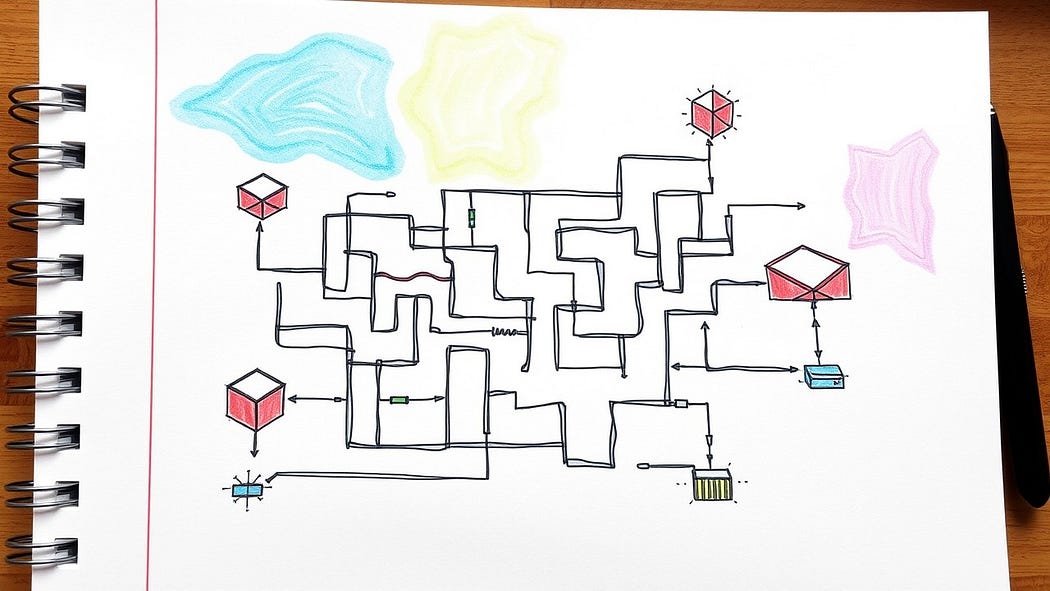
Quantum Computing: The Wild Card in the Deck
As we explore the technologies shaping the future of computing, we can’t ignore the elephant in the room: quantum computing. This mind-bending technology promises to revolutionize computation as we know it, but how does it fit into the edge computing landscape?
Quantum computing represents a paradigm shift in computational power, capable of solving complex problems that would take classical computers millennia to crack. However, its relationship with edge computing isn’t as straightforward as that of 5G or cloud computing.
While quantum computers excel at tackling specific types of problems, they don’t directly address edge computing’s core focus on localized, real-time data processing. That said, quantum computing could potentially enhance edge computing in some intriguing ways:
Cryptography: Quantum algorithms could bolster security measures for edge devices, creating unbreakable encryption methods.
Optimization: Quantum computing might improve resource allocation and routing in edge networks, making them more efficient and responsive.
AI and Machine Learning: Quantum-enhanced algorithms could supercharge edge AI applications, enabling more sophisticated on-device intelligence.
While these possibilities are exciting, it’s important to note that quantum computing remains a distinct technology from edge computing, focusing on different aspects of computational challenges. As quantum technology matures, we may see interesting synergies emerge, but for now, it remains a separate, albeit fascinating, branch of the computing tree.
Blockchain: Securing the Edge?
In our exploration of technologies intersecting with edge computing, we can’t overlook the buzzword that’s been on everyone’s lips: blockchain. This decentralized ledger technology has disrupted industries from finance to supply chain management, but what role does it play in the edge computing ecosystem?
Blockchain technology, known for its decentralized and immutable ledger system, offers intriguing possibilities for edge computing environments. While not directly tied to edge computing’s primary functions, blockchain could enhance security and trust in edge networks.
Here are some potential applications of blockchain in edge computing:
Data Integrity: Ensuring the authenticity and immutability of data processed at the edge, crucial for applications like autonomous vehicles or financial transactions.
Access Control: Managing permissions and identities in distributed edge networks, allowing for secure and transparent device-to-device communication.
Secure Transactions: Facilitating trustworthy interactions between edge devices, enabling new business models and services.
Decentralized Storage: Creating resilient, distributed storage systems that can withstand network outages or attacks.
While these applications show promise, it’s important to note that blockchain remains a supplementary technology rather than a core driver of edge computing advancements. The integration of blockchain with edge computing is still in its early stages, and challenges like scalability and energy consumption need to be addressed before widespread adoption can occur.
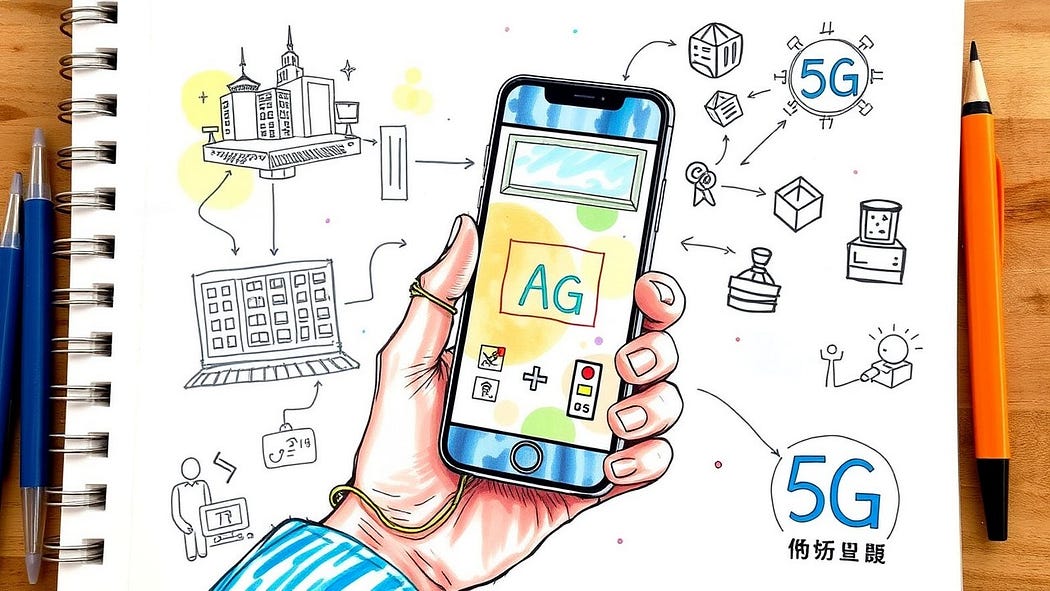
Real-World Applications: Edge Computing in Action
Now that we’ve explored the technologies powering edge computing, let’s dive into some real-world applications that showcase its transformative potential. From autonomous vehicles to smart cities, edge computing is revolutionizing industries and creating new possibilities for innovation.
1. Autonomous Vehicles: Navigating the Future
Self-driving cars are perhaps one of the most exciting and visible applications of edge computing. These vehicles generate massive amounts of data from various sensors and cameras, requiring split-second decision-making to navigate safely. Edge computing, combined with 5G networks, enables:
Real-time processing of camera and LiDAR data to detect obstacles and pedestrians
Immediate response to changing road conditions and traffic patterns
Vehicle-to-vehicle (V2V) communication for enhanced safety and traffic flow optimization
Imagine a world where cars communicate with each other and the surrounding infrastructure, adjusting their routes in real-time to avoid congestion and potential hazards. Edge computing makes this sci-fi scenario a reality.
2. Smart Manufacturing: Industry 4.0 in Action
The industrial sector is undergoing a revolution, often referred to as Industry 4.0. Edge computing plays a crucial role in this transformation, enabling:
Predictive maintenance using real-time equipment monitoring, reducing downtime and maintenance costs
Adaptive production lines that can quickly respond to changing demands or supply chain disruptions
Quality control through instant analysis of product data, minimizing defects and waste
For example, a smart factory might use edge computing to monitor the vibration patterns of machinery, detecting potential failures before they occur and scheduling maintenance during planned downtime. This proactive approach can save millions in lost productivity and equipment repairs.
3. Augmented Reality (AR) and Virtual Reality (VR): Blurring Reality’s Edge
The immersive experiences offered by AR and VR demand low latency and high bandwidth, making them perfect candidates for edge computing applications. By processing data closer to the user, edge computing enables:
Real-time rendering of AR overlays in retail environments, enhancing the shopping experience
Seamless VR gaming with minimal motion sickness, thanks to reduced latency
Remote collaboration through holographic telepresence, revolutionizing how we work and communicate
Imagine walking into a furniture store and seeing how different pieces would look in your home through an AR app on your smartphone, with the visualizations updating in real-time as you move around. Edge computing makes these seamless, responsive experiences possible.
4. Healthcare: Saving Lives at the Edge
Edge computing is revolutionizing patient care and medical research, enabling new applications that can literally save lives:
Remote patient monitoring with instant alerts, allowing for early intervention in critical situations
AI-powered diagnostic assistance at the point of care, helping doctors make more accurate diagnoses
Secure local processing of sensitive medical data, ensuring patient privacy and compliance with regulations
Picture a world where wearable devices can detect early signs of a heart attack and alert emergency services before the patient even realizes there’s a problem. Edge computing, combined with IoT devices and AI, is making this level of proactive healthcare a reality.
Challenges and Considerations: Navigating the Edge
While edge computing promises a world of new possibilities, it’s not without its challenges. As we push the boundaries of what’s possible, we must also grapple with the complexities that come with distributing our computing resources.
Security Concerns: The distributed nature of edge computing expands the attack surface, requiring robust security measures to protect sensitive data and prevent unauthorized access.
Infrastructure Development: Deploying edge computing infrastructure, especially in remote or challenging environments, can be costly and complex. Ensuring reliable power and connectivity to edge nodes is a significant hurdle.
Standardization: The lack of universal standards in edge computing can hinder interoperability between different systems and devices, potentially creating silos and limiting the technology’s full potential.
Energy Consumption: Edge devices often operate on limited power, necessitating energy-efficient solutions to ensure long-term viability and sustainability.
Data Privacy: Processing sensitive data at the edge raises concerns about privacy and regulatory compliance, particularly in industries like healthcare and finance.
Addressing these challenges will be crucial for the widespread adoption and success of edge computing across industries. As the technology matures, we’re likely to see innovative solutions emerge to tackle these hurdles head-on.
The Future of Edge Computing: Peering Over the Horizon
As we look towards the future, edge computing continues to evolve at a breakneck pace, driven by advancements in 5G technology and complemented by innovations in cloud computing, quantum computing, and blockchain. Here are some exciting trends to watch:
AI at the Edge: Integrating artificial intelligence directly into edge devices will enable smarter, more autonomous decision-making without relying on cloud-based processing.
Edge-Native Applications: We’ll see the development of software specifically designed to leverage the unique capabilities of edge computing environments, unlocking new possibilities for real-time, context-aware applications.
Green Edge Computing: As environmental concerns take center stage, there will be a growing focus on energy-efficient solutions to reduce the environmental impact of distributed computing networks.
Edge-as-a-Service: The emergence of managed edge computing platforms will simplify deployment and management for businesses, making it easier for organizations of all sizes to leverage edge technology.
Multi-Access Edge Computing (MEC): Standardization efforts will create interoperable edge computing ecosystems across different providers, fostering innovation and competition in the market.
Further References
Tech Trends In Practice (2): Blockchain, Augmented Reality, Cloud and Edge Computing, Digital Twins
Cloud Computing & Edge Computing //Science & Technology // Lecture 9//Prelims2020
MOBILE EDGE COMPUTING ARCHITECTURES, APPLICATIONS AND CHALLENGES — By Professor Anand Nayyar
Conclusion: Embracing the Edge of Tomorrow
As we stand on the brink of this technological revolution, one thing is clear: edge computing, powered by 5G, is poised to reshape our world in profound and exciting ways. From the cars we drive to the healthcare we receive, edge computing is transforming industries and creating new possibilities we’ve only begun to imagine.
The synergy between 5G and edge computing promises a future where data-driven decisions happen in the blink of an eye, where our devices respond to our needs almost instantaneously, and where the boundaries between the physical and digital worlds blur in ways that seem almost magical.
As we embrace this new era of computing, it’s important to remain mindful of the challenges and ethical considerations that come with such powerful technology. By addressing issues of security, privacy, and sustainability head-on, we can ensure that the benefits of edge computing are realized responsibly and equitably.
The edge of tomorrow is here, and it’s up to us to shape it. Whether you’re a business leader, a technologist, or simply a curious observer, now is the time to engage with edge computing and explore how it can transform your world. The possibilities are limitless, and the future is bright at the edge. 🌟
So stay tuned for updates on these futures. And if you found this glimpse beyond the bleeding edge compelling, hit the subscribe and share buttons to help spread the word!
If you want to read more interesting content don’t forget to check on my blog.
Subscribe to my newsletter
Read articles from Daniel Parente directly inside your inbox. Subscribe to the newsletter, and don't miss out.
Written by
